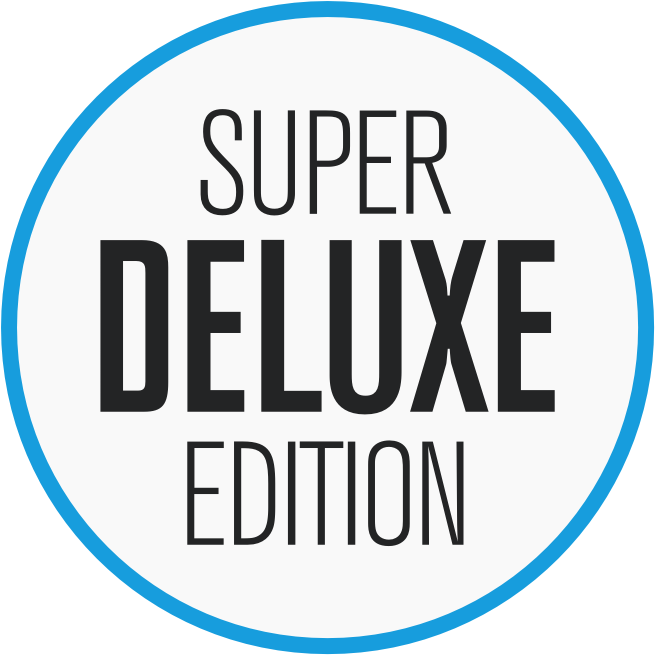Interview: Pink Floyd engineer Andy Jackson on Immersion box sets
**Update 13 November 2011**
Andy Jackson got in touch again recently, wanting to clarify the common use of the phrase ‘digitally remastered’ when it comes to the new Pink Floyd reissues.
Andy Jackson: On Amazon and I suspect everywhere, it says of the new mastering of the existing albums, “digitally remastered”. It was all distinctly analogue remastered, neither James [Guthrie] or myself would dream of doing it any other way.
Even quite simple stuff that most people would do in the digital domain, like sample rate conversion, we did analogue.
In general there are two different ways of going about mastering. Analogue domain or digital domain. Essentially the reason for mastering is a final stage of any EQing, compression & level matching that needs doing. There are excellent hardware both analogue & digital, to do this. It’s really a matter of personal preference which. Both James and I fall firmly in the analogue camp. Even for ‘simple’ things like sample rate conversion, both James and I will do it analogue, having listened to both.
A good example is the ‘concert screen films’. We needed to have that as a 48khz sample rate for DVD. James had given me 96khz masters, as per the blu-ray. Damon [Iddins assistant engineer] and I made two versions, one was digitally sample rate converted in our Sadie workstation and the other was re-recorded analogue domain between two workstations (one playing the 96kHz original, the other recording it at 48kHz). We then took it in turns to listen to both, not knowing which was which. We both chose the analogue version, it was miles better
SDE: Are Wish You Were Here and Dark Side of the Moon sourced from a direct DSD transfer of the master tape or was it converted from hi-rez PCM ?
AJ: I don’t specifically know on these as it was James, but in general they are always taken from whatever was the mix master, in terms of the stereos of Dark Side of the Moon and Wish You Were Here it would have been the original 1/4″ tapes. James surrounds were mixed to hi sample rate PCM, and then a analogue domain mastering pass was done to which ever format (DSD or PCM) was appropriate for the release format.
SDE: Are the Quad mixes of Dark Side of the Moon and Wish You Were Here sourced from DSD or were those tape-to-PCM as they never appeared on the SACDs?
AJ: The analogue tape masters were transferred to PCM by abbey road (who hold the tapes). I don’t know if James did a extra pass for EQing
SDE: Regarding Have A Cigar (Alternate Version): There is virtually no information on the credits about this. Obviously Roger singing, but what other bits of performance are different? Is it a different take, a Beatles Anthology-style creation from mixing together take 5 of this and take 7 of that etc.
AJ: It is just an earlier rough mix of work in progress on the same version. It’s actually Roger and David singing in octaves. I got this as a stereo mix, so apart from what I can pick out I’m none the wiser as to what is different. Obviously a different guitar at the end.
SDE: Regarding Wish You Were Here (With Stéphane Grapelli) – Same question as above. Apart from the fiddle, what is different? Lots of the music sounds like a different take but David’s vocal sounds much like the master version…?
AJ: Same as above, it’s a stereo of work in progress, it’s substantially the same version, a few different mix things, but it would have been a quick run-off of where they were, rather than a full mix (which would be a day or two’s work)
Thanks to Andy for what is hopefully interesting information for all you audiophiles out there. Below is the original interview.
Pink Floyd engineer Andy Jackson talks about the challenges of mixing Pink Floyd live at Wembley 1974, Blu-ray vs SACD and The Wall 5.1
 Andy Jackson is a Grammy-nominated recording engineer whose association with Pink Floyd goes back to the very early 1980s. He engineered Pink Floyd’s A Momentary Lapse of Reason, The Division Bell and co-engineered The Final Cut with James Guthrie. He was also their concert sound engineer on the band’s 1994 Division Bell tour. In addition he has been closely involved with band members’ solo projects including engineering Roger Waters’ first full length solo album The Pros and Cons of Hitchhiking and multiple projects with Pink Floyd guitarist David Gilmour, including engineering his 1984 solo album About Face and the On an Island album from 2006.
Andy Jackson is a Grammy-nominated recording engineer whose association with Pink Floyd goes back to the very early 1980s. He engineered Pink Floyd’s A Momentary Lapse of Reason, The Division Bell and co-engineered The Final Cut with James Guthrie. He was also their concert sound engineer on the band’s 1994 Division Bell tour. In addition he has been closely involved with band members’ solo projects including engineering Roger Waters’ first full length solo album The Pros and Cons of Hitchhiking and multiple projects with Pink Floyd guitarist David Gilmour, including engineering his 1984 solo album About Face and the On an Island album from 2006.
He has recently been responsible for the audio mixing and mastering of much of the bonus material on both The Dark Side of the Moon Immersion box set (out now) and the Wish You Were Here Immersion box set which is due out on Monday 7th November. These bonus tracks included 13 live tracks from Wembley in 1974. We caught up with Andy recently and asked him about the challenges involved in getting this material into shape.
superdeluxeedition: You have spoken about the ‘missing’ kick drum on the live Wembley recording of The Dark Side of the Moon. Apart from fixing that, what was the biggest challenge in terms of getting this audio recording into shape for inclusion on the Immersion box?
Andy Jackson: Spill was a major problem. There was a lot of everything on the vocals, but this is only to be expected with a gig recording. What was not expected was the amount of guitar on the drums, and most problematically, the bass and keyboard stacks were right next to each other and the spill between them was dreadful. On the final mix you can hear it on the bass, the imaging is rather vague. It should be in the middle, but gets pulled over to the right where I’d placed Rick’s keyboards. It actually wanders around a bit, the louder I had the keyboards, the more it drifts right.
SDE: Drums apart, were any bits of new performance ‘flown in’ to this live recording at any point to correct a mistake, for instance?
AJ: We used two different nights recording for the album. Essentially it splits as ‘side one’ and ‘side two’, we switch nights at Money. I did occasionally use bits & pieces from the other night for fixes, vocals mostly. If you accept that in order to make a compelling record, it needs to be free from things that will break the spell too much, and a sour note would do. With current technology we can re-pitch things, but the spill problem meant that if we did, you’d hear the re-pitched spill on the vocal, and that spill would be out of tune. Consequently, it was better to use the other night as an insert. The only addition was on the intro of Time where we added in the heartbeat. They hadn’t played it on the night, and it is so much part of the fundamental rhythm I thought it was a liberty that was justified. I mixed it quite a bit quieter than the balance on the original album, enough to do the job but not drawing attention to itself.
SDE: The concert in the box is actually from two nights – could you be more specific in terms of which songs were from which nights?
AJ: Side one was from the 16th [November 1974], side two the 15th.
SDE: The “early mix” on disc 6 of The Dark Side of the Moon Immersion box is a fascinating listen. Is this mix presented exactly as it was when the band took it home over Christmas 1972? i.e. have any tweaks or enhancements been applied?
AJ: Only a pass for mastering. Played the original 1/4″ tapes into my workstation via my mastering equaliser, giving it a tweak on the way. This is normal procedure for any record. Otherwise it’s exactly the same.
SDE: In your opinion is the hi-res Blu-ray stereo / 5.1 2011 remaster of The Dark Side of the Moon now the definitive audiophile version of the album? Is there any reason to hold on to the 2003 SACD?
AJ: Hi-def PCM & DSD sound different, you pays your money you takes your choice on that, I like DSD, very analogue sounding. I believe that the BD is not new mastering, it is derived from the same source as the SACD [this is the case].
SDE: What has been your favourite or most satisfying aspect of working on the audio for the Immersion Box release of The Dark Side of the Moon
AJ: Oddly I’m going to say it was the early versions of Sheep and Dogs that are on Wish You Were Here [Immersion and Experience editions], not The Dark Side of the Moon. I loved seeing the writing process of those revealed. The best single moment was finding the tape that gives us the Easter Egg of Roger the Hat [Pink Floyd roadie whose spoken voice is heard on On The Run]. I’d hoped that the tapes of the interviews would turn up, but it seems to be gone. Fortunately Nick had taken a copy of Roger the Hat’s one at the time, as it is so funny.
SDE: Do you know any more about The Wall Immersion Box and lack of 5.1 surround?
AJ: James [Guthrie] hasn’t done it is the simple answer. It is on a possible agenda, but it’d take a long time to do, and just wouldn’t fit in the schedule. Shame really. We did do a surround of it for the movie, but firstly that wouldn’t translate very well outside the cinema and it wasn’t all the songs, due to the differing versions in the film [Geldof’s versions etc].
The Dark Side of the Moon Immersion box set is out now.
Order this box: here [UK] here [US]
Wish You Were Here Immersion box set is out on Monday 7th November (8th in the US). Pre-order this box: from the UK from the US
Andy Jackson specializes in CD mastering as Tube Mastering (www.tubemastering.com).

 Interview
Interview


 Reviews
Reviews
By Paul Sinclair
25